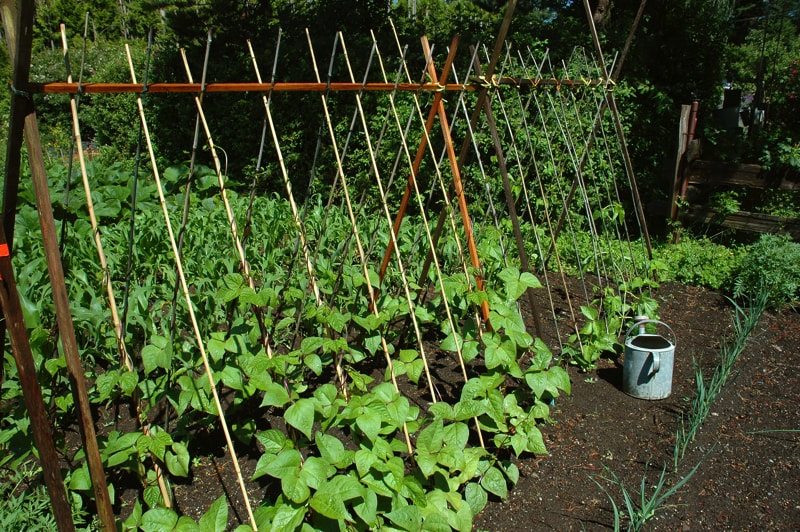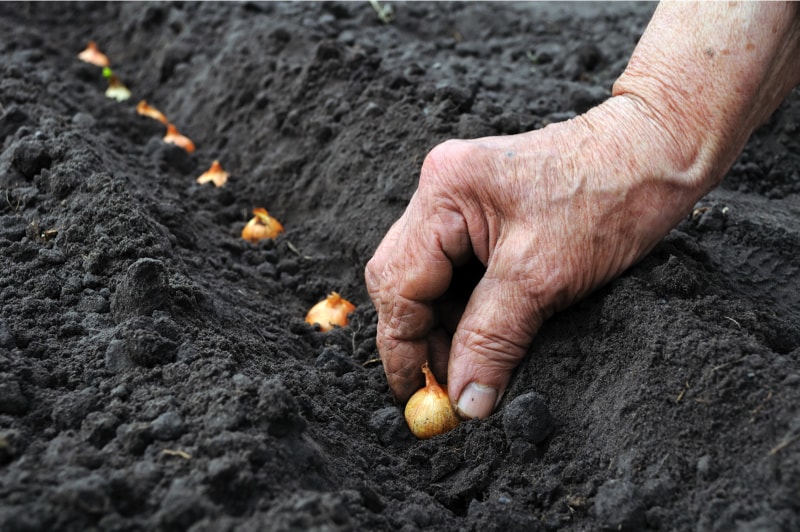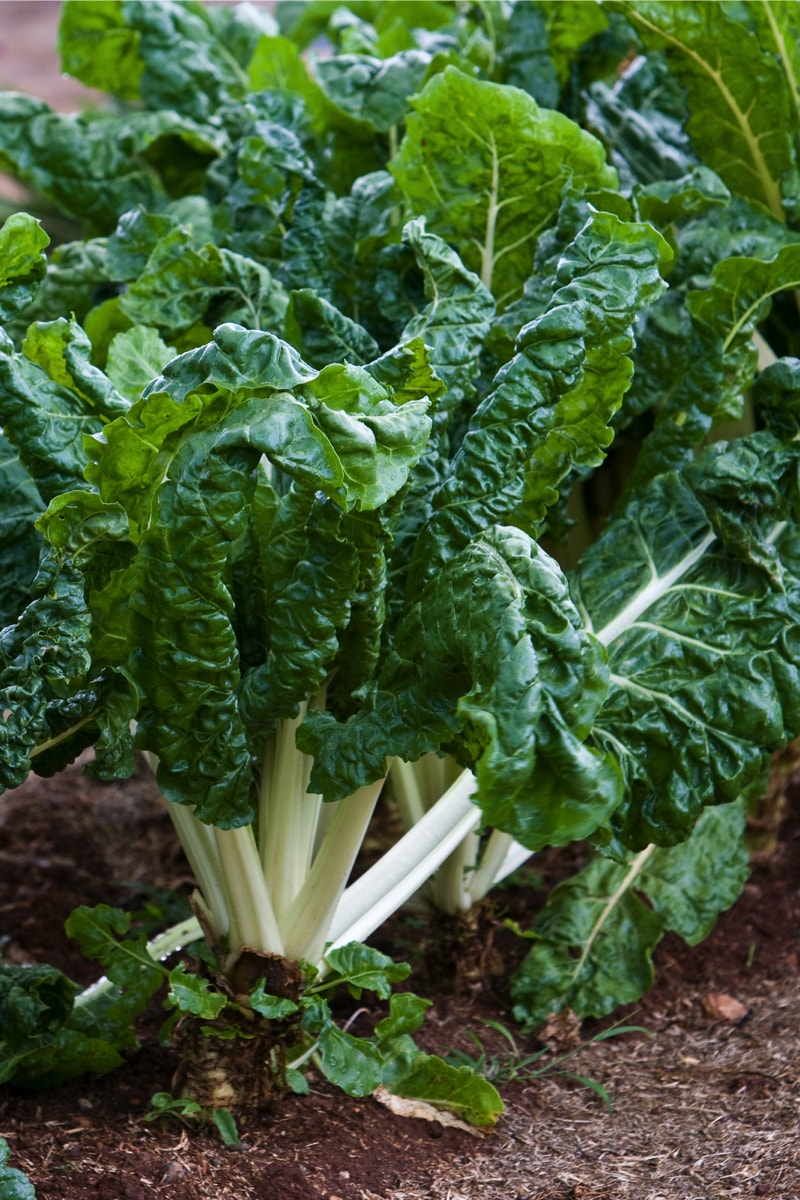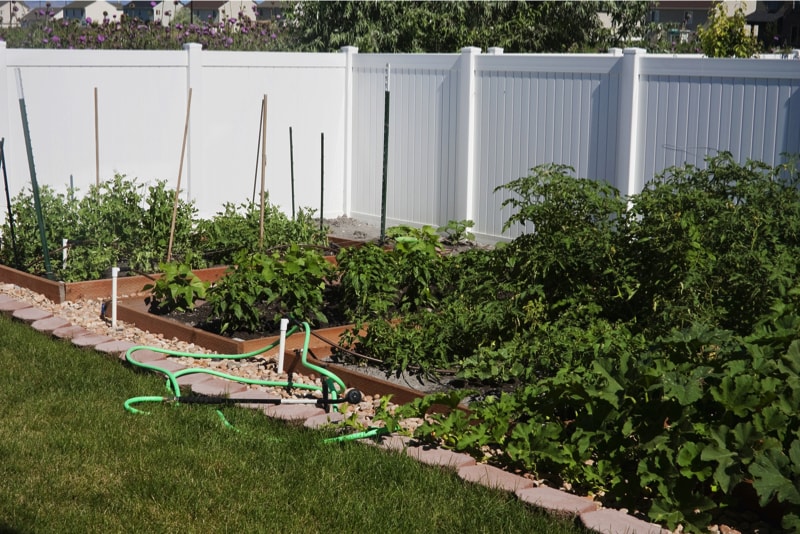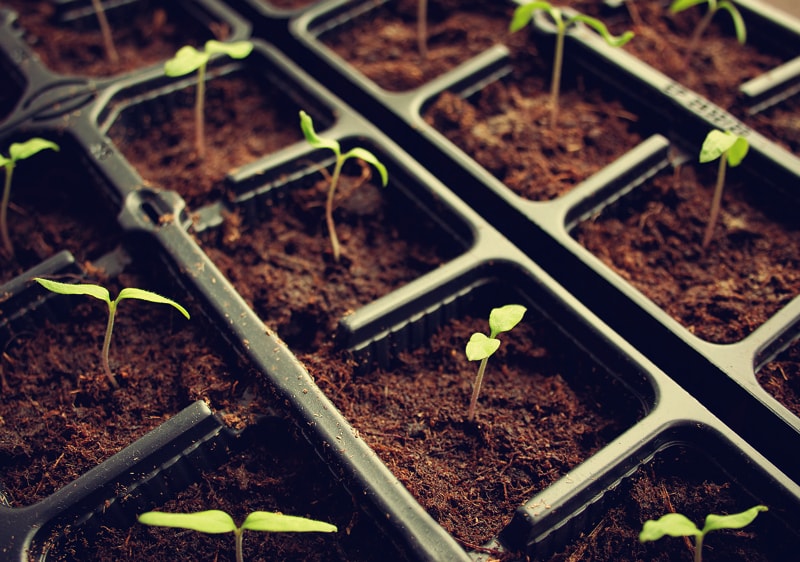 Tomato seedlings in small culturing pots
Tomato seedlings in small culturing potsGrowing garden vegetables is a richly rewarding experience for those that put int the time and effort. It doesn’t necessarily require vast amounts of land in order to provide some essential food items for your table, however if you are of the mindset to become self sustainable, then you would require a reasonable patch of land in which to grow your daily requirements.
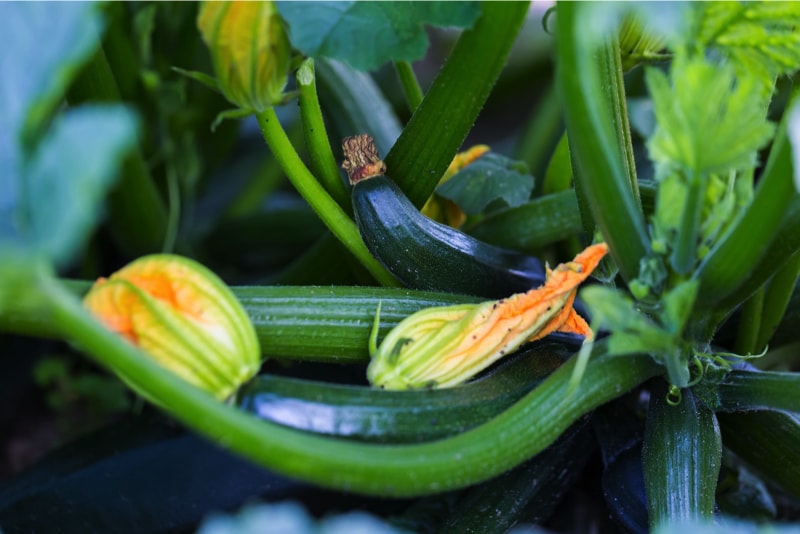 Courgettes growing in a garden
Courgettes growing in a garden
Its a sad indictment that in todays world, many of our children aren’t taught the value or pride that comes from growing their own fruits and veges. What makes things worse, is that many of these children think that these types of foods just come from supermarkets and have no idea that they are often grown from the ground in large glass houses or in large open fields.
There are many different types of vegetables that can be grown in a back yard garden. One of the things you need to be aware of, is that even though its a fulfilling experience to eat the results of your labors, there are just as many other little nasties lurking in your garden that, given half the chance will consume your fruits before you ever get to. We’re talking about common garden pests that will seemingly eventuate out of nowhere and start eating away at your pride and joys. Therefore you need to develop a strategy as to how to best deal with these little creatures. There are really a couple of ways to deal with them, one being the Organic way, (Burpee : The Complete Vegetable & Herb Gardener : A Guide to Growing Your Garden Organically) where you need to vigilantly and manually deal with these yourself (without chemicals) by removing and destroying them as you discover them. Another organic way, is to introduce other insects that won’t harm or eat your vegetable crops but are a natural enemy to your primary pest. This helps to keep the numbers of your pests to a minimum. Covering the crop with a fine mesh to prevent access to the crop is also a practical way to reduce invasion by various pests. A combination of methods can work well.
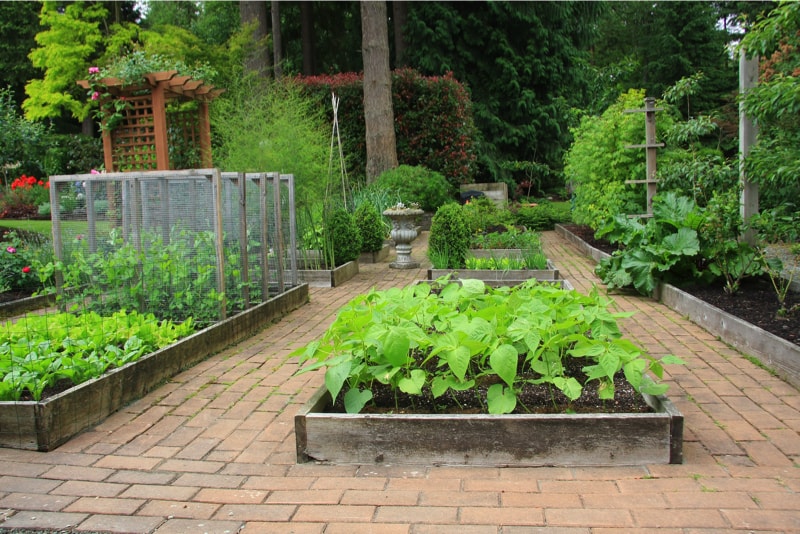 Beautiful backyard organic vegetable garden in raised beds
Beautiful backyard organic vegetable garden in raised beds
The other method of dealing with these insect pests is through the use of well known chemical pesticides. These are proven to work well in most cases, however when it comes to harvest time, you need to make sure you thoroughly wash the vegetables before cooking and serving to remove any residual pesticide. There is some concern that the pesticide residuals can be absorbed into the vegetables, so be very cautious about using them and only use them if absolutely necessary (and you don’t mind being ‘non organic’). There’s no point using them if there is no sign of any pests in your garden.
Another pest (of the non insect kind) are various diseases that vegetables and plant s can acquire. Many of these can only be treated effectively with chemical treatments. If your vegetable garden (or a particular crop) seems to be infected with a specific blight or disease, check on the web for symptoms, and see what the recommended treatments are. Sometimes, it can be impossible to recover a crop once it has been infected, so stay very vigilant for these types of problems.
One of the keys to success with growing vegetables in your own garden, is to stagger the planting times and plant for the various seasons. Dependant on where you live, there will be some vegetables that grow best in certain seasons or specific months. A good quality gardening book, (like “Mini Farming: Self-Sufficiency on 1/4 Acre”, or “All New Square Foot Gardening, Second Edition: The Revolutionary Way to Grow More In Less Space”) will provide you with great guidance on what to plant and when to plant. If you have an abundance of land space to plant vegetables for most of your family’s requirements and needs, then you don’t want to plant everything all at once so that everything ripens or matures at the same time. This is why its important to stagger the growing times through the growing season, so that you can harvest what you need for now and that you will have a ready supply of fresh crops that all mature over the growing season. (Anything more than you can eat, can simply be stored in a decent chest freezer in your garage or laundry)
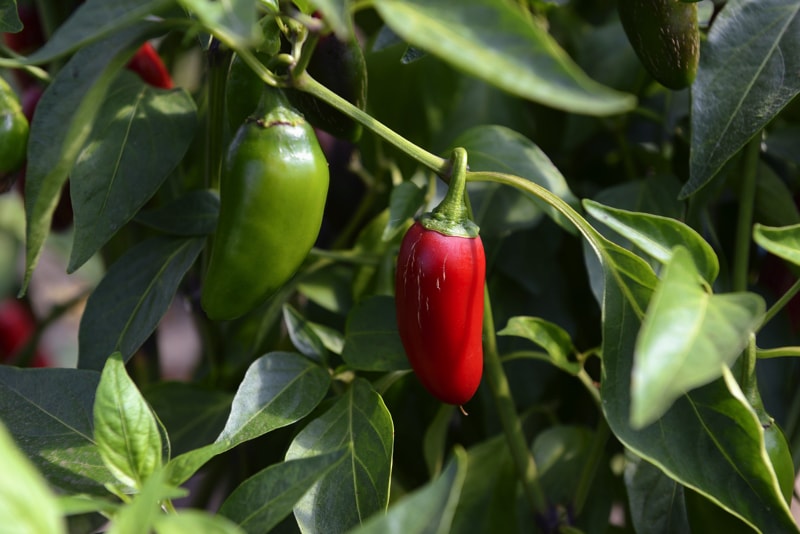 Jalapeno chilli peppers at maturity.
Jalapeno chilli peppers at maturity.
By now, you’re probably thinking to yourself, “This vegetable growing lark is all a bit too problematic.” You shouldn’t, the thrill, and the feeling that you get when you sit down to a meal that contains your own home grown vegetables is second to none. Not only do you know how their grown, but you also know they’re the freshest vegetables you can get. Nothing beats the taste, the freshness and the satisfaction of having grown them yourself.
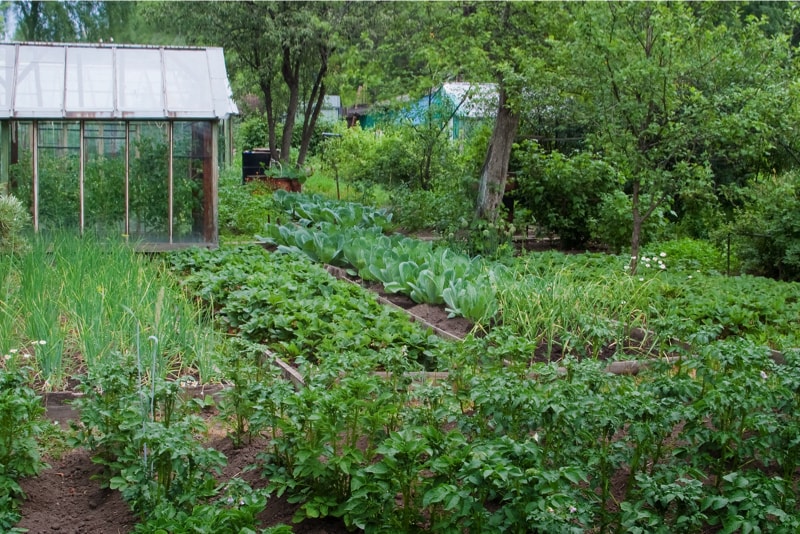 Prolific mature vegetable garden in a backyard.
Prolific mature vegetable garden in a backyard.
Enjoy the reward, because once you’ve done it once, you’ll keep doing it, and who knows, maybe it’ll even inspire you to acquire a much bigger plot of land on which you can make your whole family self sufficient from its own fruits and vegetables.
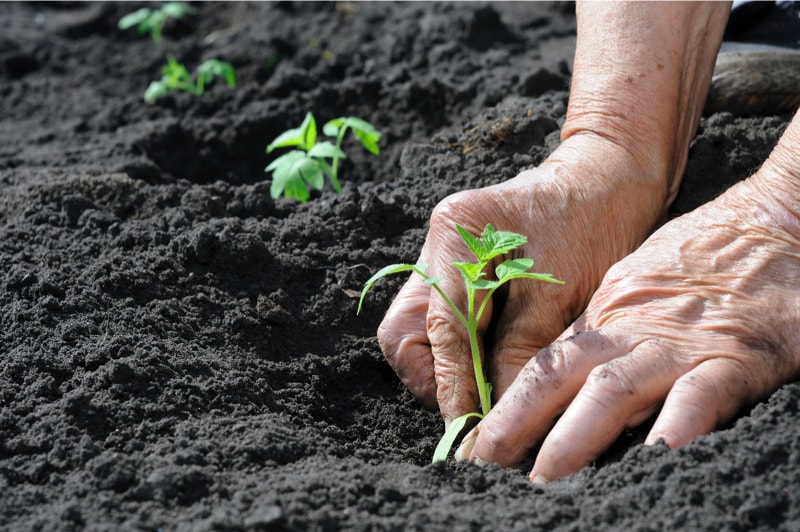 Hand planting tomato seedlings into rich soil
Hand planting tomato seedlings into rich soil
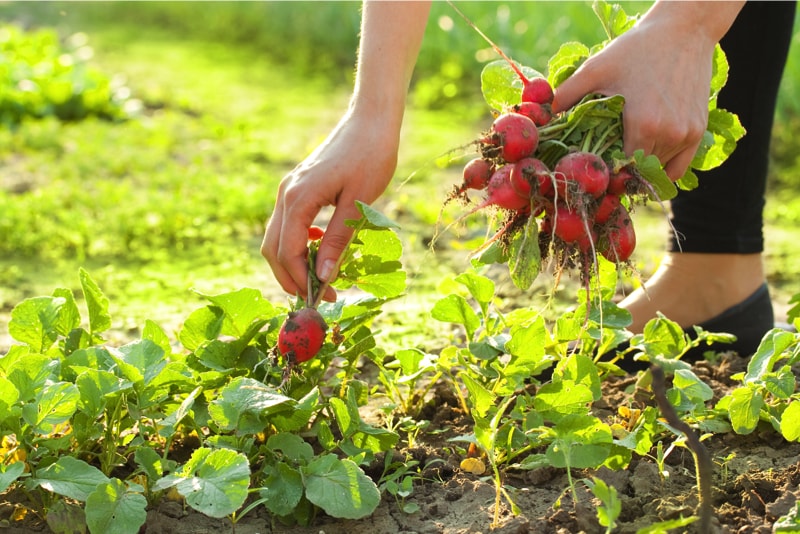 Harvesting fresh radishes from the garden
Harvesting fresh radishes from the garden
Growing vegetables on a really small scale can be achieved by apartment dwellers in pots and buckets. Sure, you may only cultivate enough for a day or two’s use, however its the pleasure you derive from doing this when you eat something you have grown yourself (from scratch)
 Vegetables growing in containers- Image via www.suttons.co.uk
Vegetables growing in containers- Image via www.suttons.co.uk
If you have a very large pot, a long box, or a bucket that holds around 5 gallons, then you should be able to grow a couple of vege plants in it (and reap a small harvest in due course). The types of vegetables that grow well in pots and hence would be ideal for small space dwellings, or apartments include;
- Beans: These will climb, so you need something for them climb up
- Beets: Your pot should be big and at least 12 inches deep
- Carrots: Perfect vegetable to grow in a pot. Stick with the baby varieties
- Cole crops — broccoli, cabbage, cauliflower all grow well in containers as long as your pots are big enough
- Cucumbers: Small cucumber types like ‘Bush Pickle’ and ‘Salad Bush’. Plants dangling over the edges of a hanging pot are something to behold.
- Eggplant: Perfect if your container is at least 5 gallons. Only plant one eggplant per 5-gallon pot and support it as it grows
- Lettuce and other greens: The ultimate container vegetable.
- Onions: Green onions grow well in containers
- Peas: About 6 plants ina 12 inch pot. Give them a frame or something to grow up
- Peppers & Chillies: These grow well in pots, but the bigger the pot the better.
- Radishes: These grow quickly and easily even in the smallest container.
- Strawberries: Not a vegetable but these love to grow in pots and containers, and will reward you handsomely
- Tomatoes: Everyone loves fresh tomatoes. There are lots of choices, and depending on your tastes, you can go with large toantoes or the tiny ones. Stake to support.
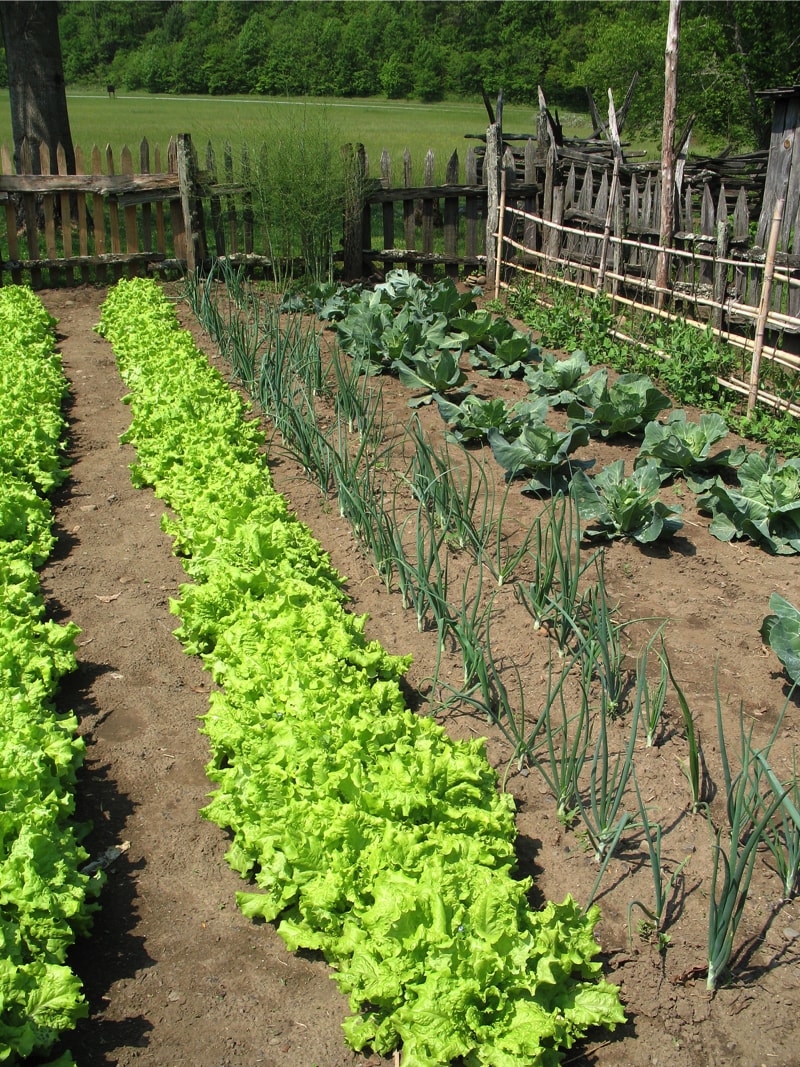 Vegetable garden growing lettuces, spring onions and cabbages
Vegetable garden growing lettuces, spring onions and cabbages
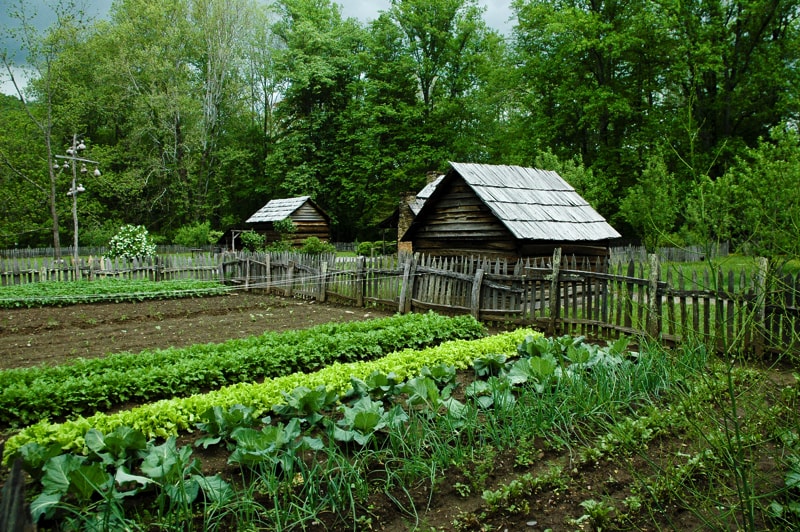 Vegetable garden with rows of vegetables nearing maturity
Vegetable garden with rows of vegetables nearing maturity
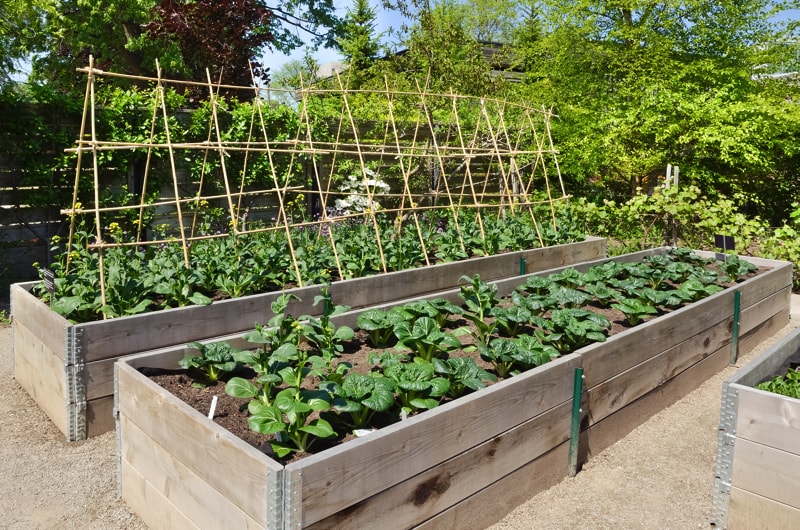 Raised bed organic vegetable gardens
Raised bed organic vegetable gardens
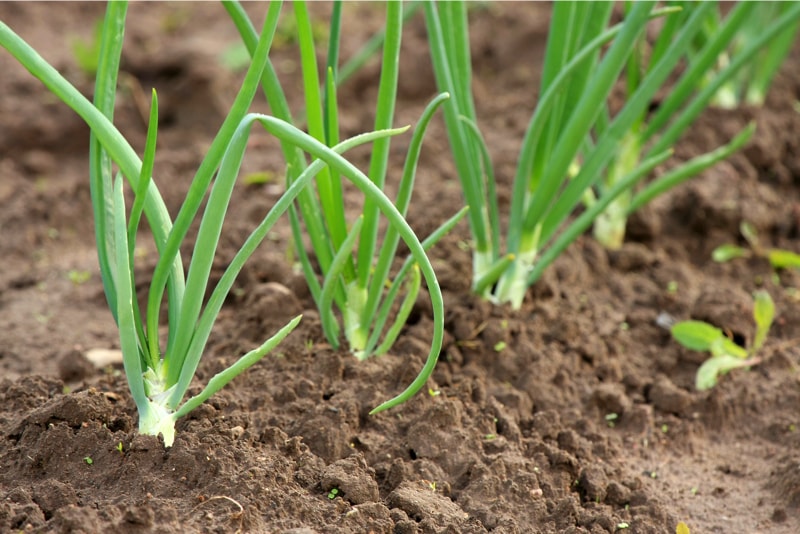 Spring onions growing in a vegetable garden
Spring onions growing in a vegetable garden
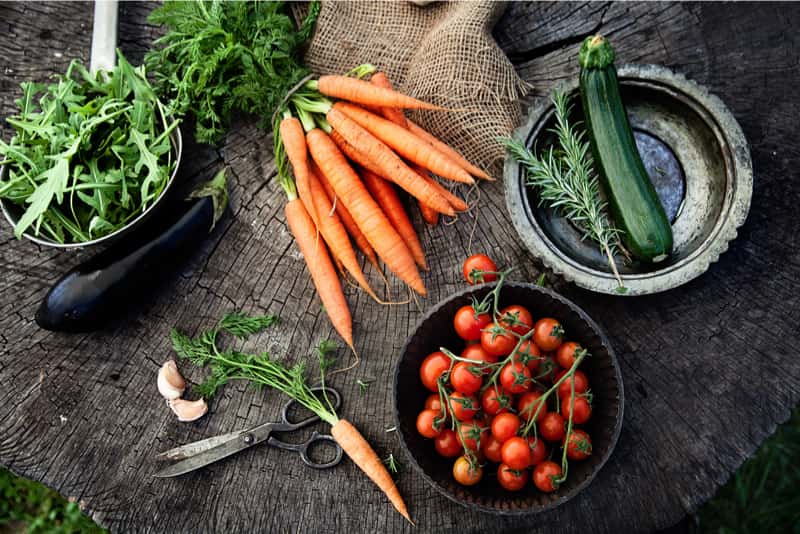 A selection of garden grown vegetables
A selection of garden grown vegetables
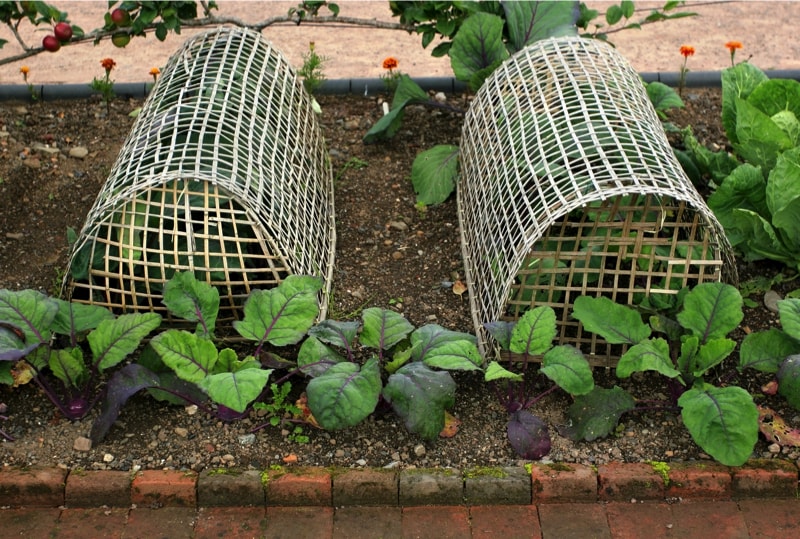 Vegetable bird protective covers
Vegetable bird protective covers
The above image shows a strawberry plant with maturing strawberries.
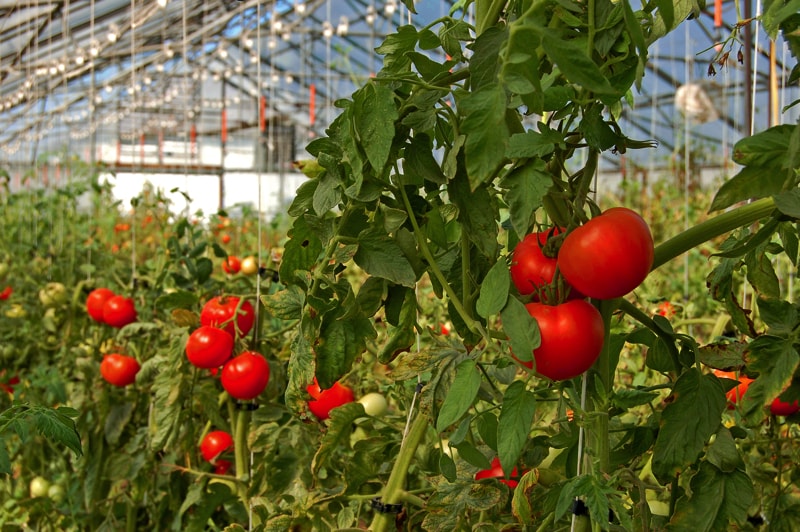 Tomatoes growing in a glasshouse
Tomatoes growing in a glasshouse
